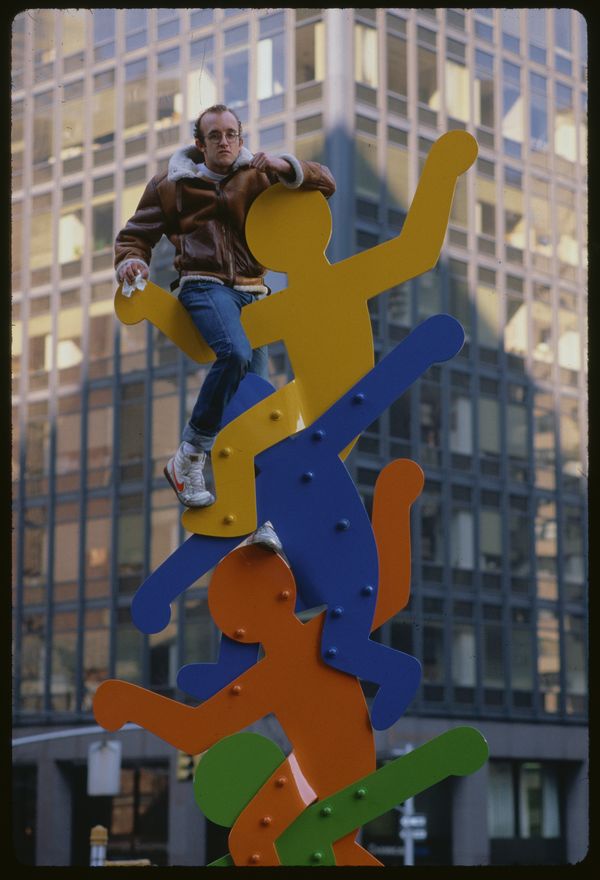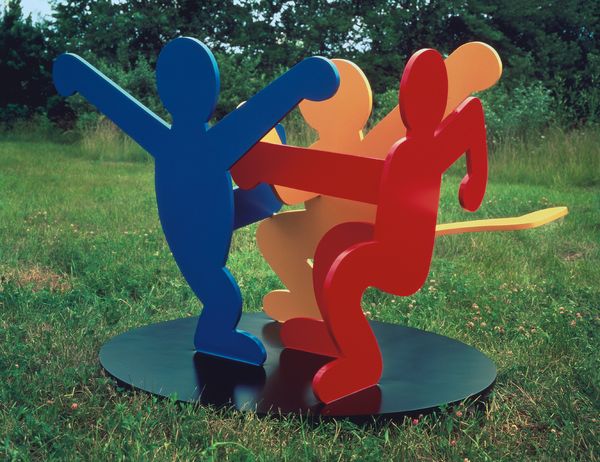Keith Haring sitting atop one of his sculptures, 1986. Photo by Nick Elgar/Corbis/VCG via Getty Images, Artwork © The Keith Haring Foundation
Beginning with his earliest graffiti and continuing through to the end of his tragically short career, Keith Haring sought to connect with the general public and modernize the accessibility of art. Haring’s work was defined in equal measure by the democratized nature of its expression and also by his determined political and community-oriented themes, touching upon the most impactful topics of the day, notably the AIDS crisis. Executed in 1989, just one year before his own tragic AIDS-related death, Untitled (Three Dancing Figures), Version A embodies the energy of an era heavily influenced by the activism for gay-rights and by the invigorated artistic community that was Keith Haring’s orbit.
Keith Haring Untitled (Three Dancing Figures), Version A, 1989
Although his time spent among the creative crowd of downtown New York was abbreviated, Haring’s outsized persona made an everlasting impression on the city and those around him. Known for his compassion, belief in equality and innate ability to communicate across various cultural and economic backgrounds, Haring frequented Club 57, a local church basement hang where the New York counterculture came to dance, perform and exchange ideas. After hosting an underground exhibition at the club in 1981, Haring was "discovered" by Andy Warhol and Tony Shafrazi who took his drawings from the subway and the street to the gallery. Here, Haring curated a community that reflected and supported his ideals and endeavors in art.
Representative of this close-knit diverse community, Untitled (Three Dancing Figures), Version A shows a group of uniquely hued, faceless figures circled in energetic movement. The child-like flatness of the figures is as if his sketches were peeled off the page and expressed in a (barely) three-dimensional space. Garnering inspiration from break-dance culture and electronic music, Haring appreciated the coordination required by dancers who weave between and around one another with swift, animated movements. Turning this motion into sculpture and representing the energized culture of New York City, Haring intended for these large-scale works to be accessible and readily discernible depictions of bubbling vivacity to all who encounter them.
I think public sculpture should aggressively alter our perception of the environment in a positive way.
Compelled to produce a high volume of work within a short period of time, Haring wished for his legacy to live on within people long after he was gone. His main support and focus was always on the various communities within which he participated — the gay community, the arts community, the downtown scene and beyond.

